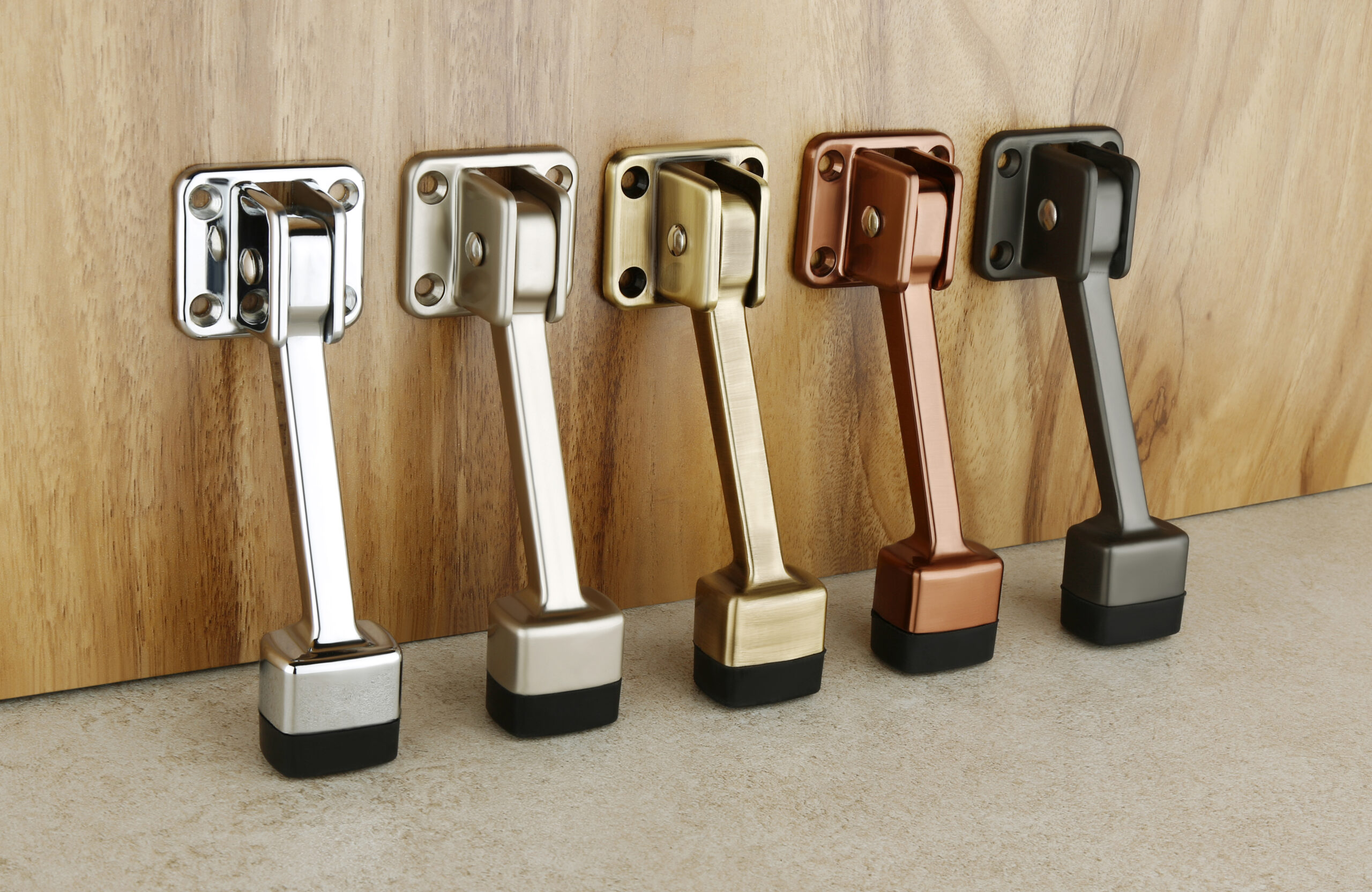A door stopper is a device used to keep a door from closing or opening too far, protecting walls, furniture, and the door itself from damage. It helps maintain a door in a fixed position, which can be particularly useful in high-traffic areas or when ventilation is needed. Here’s a detailed description:
Types
- Wedge Stoppers: Small, often rubber or plastic wedges that can be placed under the door to prevent it from moving. They are portable and easy to use.
- Wall-Mounted Stops: Fixed devices attached to the wall that cushion the impact of the door when it is opened. They usually have a rubber or padded surface to absorb shock.
- Floor-Mounted Stops: Installed on the floor near the door to prevent it from swinging too far. They can be cylindrical or flat and are often made of metal or rubber.
- Hinge Pin Stops: Attach to the door’s hinge and limit the range of motion of the door, preventing it from swinging open too wide.
- Kick-Down Stops: Mounted on the floor and operated with a foot pedal to hold the door in place. They are especially useful in commercial settings.
Features
- Material: Made from various materials including rubber, plastic, metal, or a combination of these. Rubber and plastic are often used for their cushioning properties, while metal provides durability.
- Design: Available in a variety of designs from simple and functional to decorative styles that complement the door’s appearance.
- Installation: Some are easy to install with adhesive or screws, while others may require professional installation for a more permanent solution.
- Adjustability: Certain door stoppers offer adjustable settings to accommodate different door sizes and angles.
Applications
- Residential: Used to prevent doors from hitting walls, especially in high-traffic areas like hallways and entryways.
- Commercial: Helps in maintaining door positions in offices, retail stores, and other commercial spaces where doors are frequently used.
- Institutional: Employed in schools, hospitals, and other institutional buildings to protect walls and ensure doors do not interfere with movement or operations.
Installation
- Wall-Mounted: Install by attaching the stopper to the wall using screws or adhesive, positioning it where the door will make contact.
- Floor-Mounted: Securely fix the stopper to the floor near the door’s path, ensuring it effectively prevents the door from opening too far.
- Hinge Pin: Replace an existing hinge pin with a specialized stop that limits the door’s swing.
- Kick-Down: Install by securing the base to the floor and ensure the pedal mechanism is functional.
Maintenance
- Cleaning: Regularly clean the stopper to prevent dirt and debris buildup.
- Inspection: Check for wear and tear, especially on rubber components, and replace or repair as needed.
- Adjustment: Adjust the stopper as necessary to ensure it effectively prevents door damage and operates smoothly.
Conclusion
Door stoppers are practical devices designed to prevent doors from causing damage to walls, furniture, or themselves. They come in various types and materials, catering to different needs and settings. Whether for residential, commercial, or institutional use, door stoppers offer a simple yet effective solution for maintaining door functionality and protecting your space.
Door Stopper ME – 506
Categories:
Door Stoper, Furniture Hardware
Upgrade guest rooms with elegant and durable Door Stoppers. These stoppers ensure a quiet and comfortable stay by preventing doors from slamming and causing disturbances.
| Finish: | BRASS ANTIQUE | SATIN | BLACK MATT | ROSE GOLD | GOLD | GREY | PVD |
|---|


